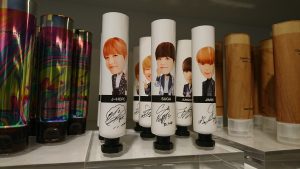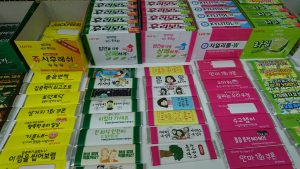South Korea is outperforming Japan in exporting agricultural products. During my trip to Seoul, I had a chance to visit a printing company with a digital printing and manufacturing plant. I will share what I learned there and why the company is successful in its digital printing businesses.
I visited a company which owned 10 printing presses (including offset, gravure, and screen) to print seals and labels for pharmaceutical and cosmetic products. Even though such variety of machines seemed to be able to deal with customer needs, the company’s policy, “continuous pursuit of advanced printing technology” had led them to introduce HP’s digital printing press, “Indigo” three years ago. Currently 2 Indigo units run 5 million shots and print about 500,000 meters in total for a year.
At the time of its introduction they were going to make the best use of Indigo in orders up to 500 m at a time or in those of specialized digital print features including variable data and traceability. But now, even big quantity orders are recommended to be carried out by digital print finishing if the customer has some of the following demands:
- The first priority is high-valued printing products
- Strict quality criteria and zero defects including pin holes
- High quality digital photo printing
- The customer specifies digital print finishing
The production manager smiled and added “Thanks to digital printing, we can now deal with a variety of requests from our customers”.
It was brought to my attention that there was a digital printer next to the place where designers were working. In fact, some of them are able to operate the printer. Therefore, they can make prototypes quickly out of their clients’ ideas and talk with their customers in a timely manner, which leads to elevated customer satisfactions. This experience in Seoul made me realize that the printing industry, which has sarcastically been called the “order receiving industry”, is now changing to the “solution industry”.
Because the printer was in the design team’s space. Several designers were able to operate Indigo and produce samples in the middle of the presentation. The customer was highly satisfied with their expeditious service as well as the quality of the product. (see photos)
I realized that they conduct not only the typical order-receiving business, but also, breaking in tradition, a problem-solving business.


Digital printing brings client’s idea into shape in a timely manner





